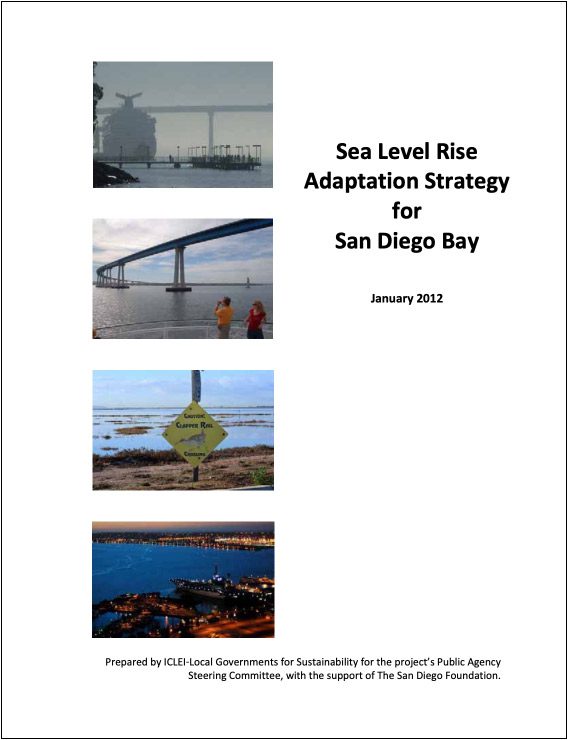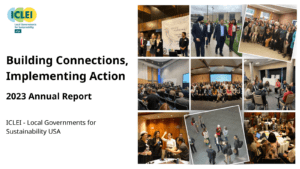The San Diego region is a center of economic activity, diversity, and culture in Southern California. The region has long been known for its remarkable landscape, biological diversity, economic prowess, and prestigious academic institutions, and many have acclaimed it as one of the nation’s most livable communities.While the region’s growth and status as an economic center is projected to continue for the foreseeable future, real threats to this status are posed by the impacts of climate change. Among these expected climate change impacts, perhaps none poses a greater risk than sea level rise. This century, elevation of average high tide could change by as much as 1.5 meters, or approximately five feet.
San Diego is a region defined by its relationship with the coast and heavily invested in its coastal communities. San Diego Bay, in particular, is a treasured asset, the anchor of the regions’ tourism and military economies.With so much at stake, it is critical to begin considering policy responses long before the worst impacts associated with sea level rise are projected to occur, because developing and implementing solutions will require unprecedented collaboration with long leadͲtimes, and because infrastructure is being built now that will be vulnerable to impacts in the future.To begin, a Public Agency Steering Committee comprised of staff from the five bayfront cities, the San Diego Unified Port District, and the San Diego County Regional Airport Authority came together to develop this Sea Level Rise Adaptation Strategy for San Diego Bay (Adaptation Strategy). The Adaptation Strategy consists of two primary components: a Vulnerability Assessment that evaluates how community assets could be impacted by sea level rise, and Recommendations for building the resilience of those community assets.
The Adaptation Strategy was prepared by ICLEIͲ Local Governments for Sustainability through a collaborative, regional stakeholder process that included most of the public agencies and private sector representatives with a major interest in the future of San Diego Bay.Over the course of multiple workshops, stakeholders and technical advisors developed common assumptions and consensusͲbased recommendations that should form the basis of the region’s climate adaptation planning going forward.The Adaptation Strategy is a living document that can be implemented by local agencies and reͲevaluated as new information becomes available in the coming years.



